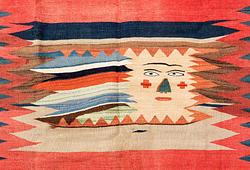Ola Billgren
"Cityscape (30 år i Lund)"
Signed Ola Billgren and dated -89 on verso. Canvas 116 x 176 cm.
Näyttelyt
Göteborgs konstmuseum, "Ola Billgren", 20 Sept - 16 Nov 1997. Sundsvalls museum, Dec 97 - Jan 98.
Kirjallisuus
Douglas Feuk and Anne Ring Petersen, "Ola Billgren - Måleri Paintings", 2000, illustrated fullpage p. 198.
Lars-Göran Oredsson, "Svensk Nutidskonst 3", 1993, illustrated fullpage no. 9.
Muut tiedot
Ola Billgren's ‘Cityscapes’ paintings celebrate the ruins of ancient cities just as Lord Byron and the romantic poets did. Blending the permanent frame of architecture with the irrational structures of the mind, the images could be called post-modern romantic postcards. The painting in the auction, ‘Cityscape (30 år i Lund)’, is overlaid with two parallel fields, appearing as if two different memories – the upper one light and the lower one darker and more chaotic, a lightly sketched Lund Cathedral emerging from the canvas.
Billgren’s paintings are characterized by duality and ambiguity in both their expression and content, and have an unmistakably dream-like quality. His technique emphasizes this by its oscillation between the poles of the realistic and the abstract, each of these opposites defining Billgren as an artist.
His art has undergone several phases, or metamorphoses, made evident in his different stylistic periods. The early ultra-realistic painting later moves towards less representational art, culminating in the red period in which his paintings are covered with a bright red which catches the viewer’s eye. Billgren chooses to reduce the original picture and with the addition of the red creates a painting that has found its ultimate form through processes of building up and reduction. The item in the painting ‘Kvinnofigur i landskap’ from 1994 shows the typical elements that define Billgren’s red period. At first glance it is a monochrome red canvas but after a while we see a greatly reduced but still recognizable image of a female form.
































